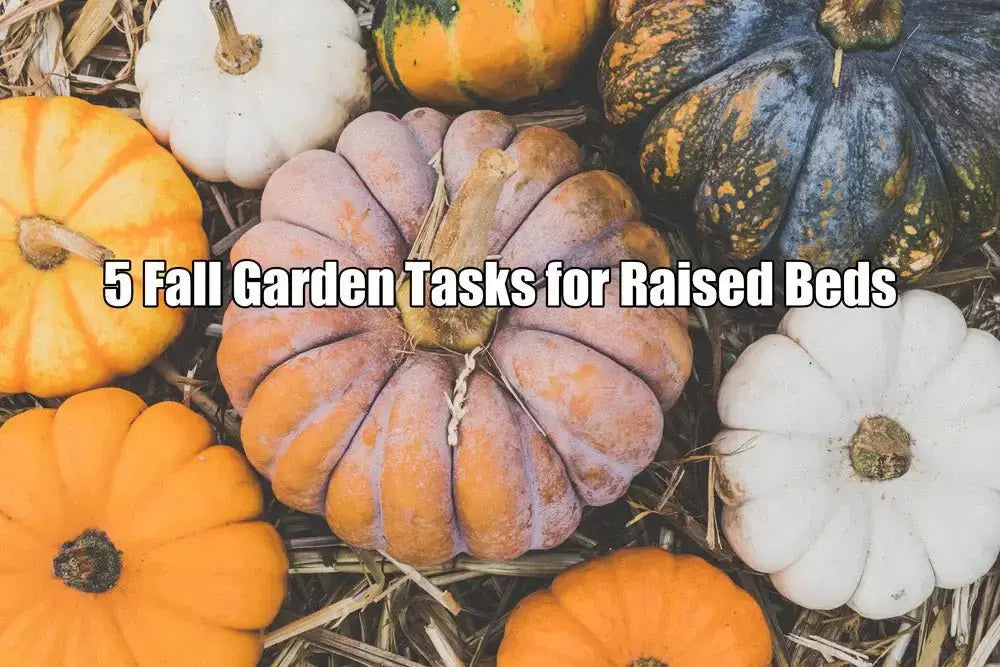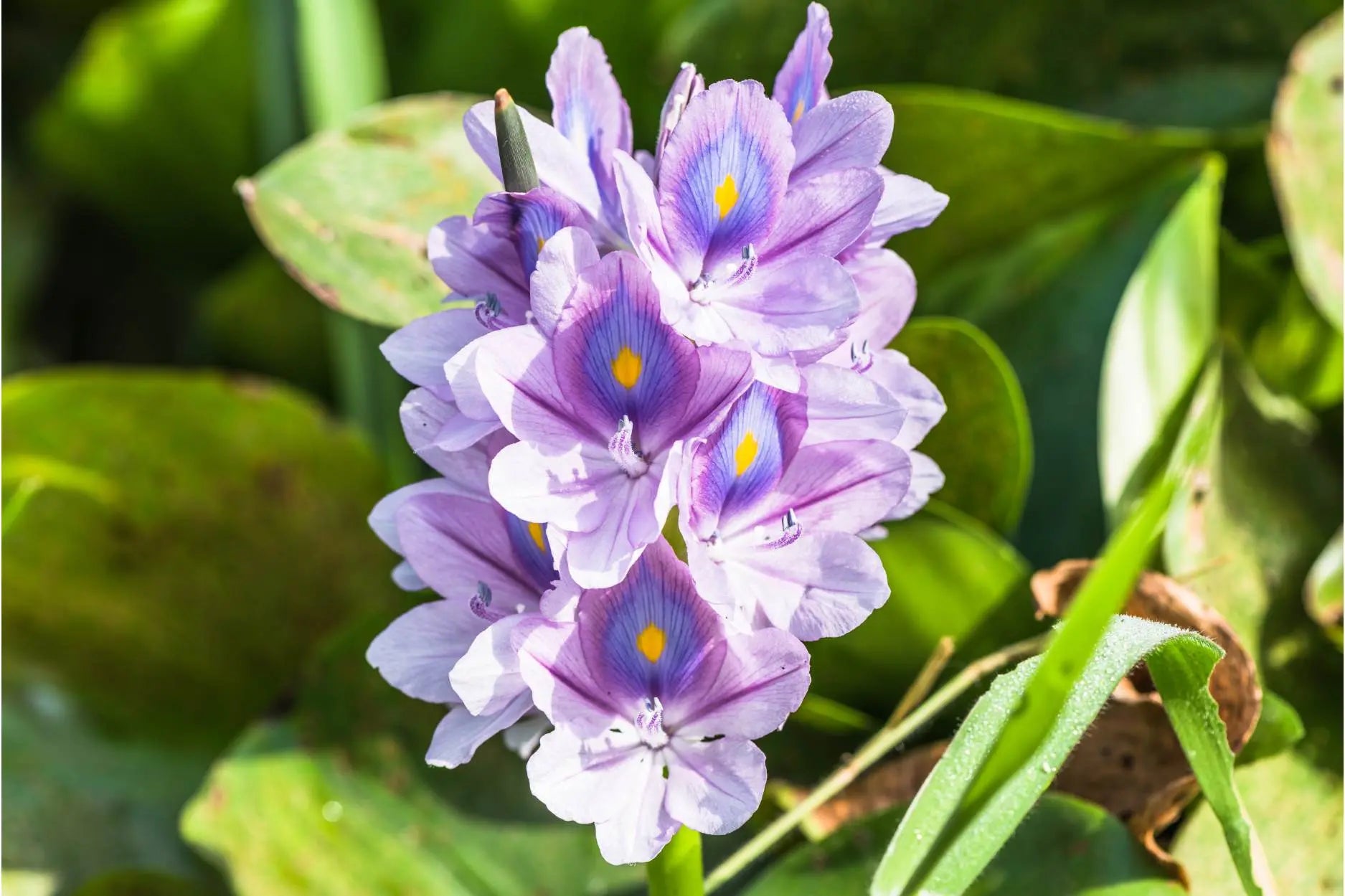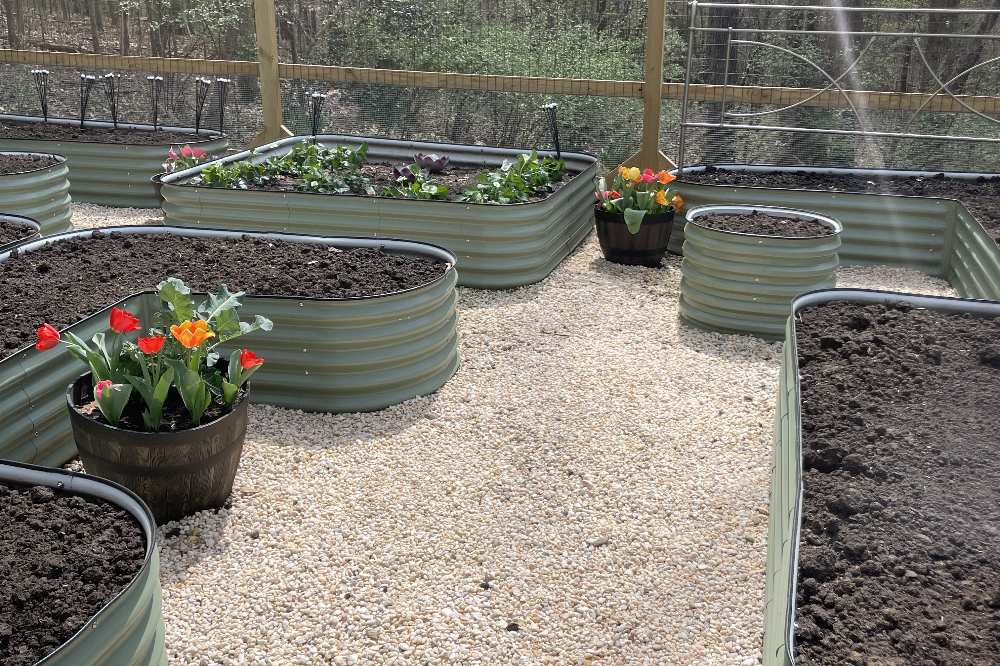Planting Garlic in Raised Beds: An Easy Guide
Looking to make use out of your raised garden beds year-round? Garlic is a resilient and overwintering vegetable that will have you harvesting when most other plants aren’t nearly ready. Garlic is an often overlooked and easy to grow vegetable. Its use in the kitchen and common dishes is more widespread and versatile than most other growables.
In this guide, we’ll cover: (Click the title to reach that section quickly)
Benefits of garlic in raised beds - When to plant Garlics
- Where and what types to buy
- Preparing & planting garlic cloves:
4.1 Do you peel garlic before planting?
4.2 Garlic spacing in a raised bed
4.3 Garlic planting depth
Benefits of Planting Garlic in Raised Beds

Raised beds are the optimal space to house large, flavorful cloves, and if you do it right, you’ll never have to buy garlic again! Garlic can be saved and used to plant year after year.
Raised beds are the best way to plant garlic, as their drainage and compaction are usually superior to planting directly into the ground. Swiftly draining and heavily composted soil will give garlic the best chance at success.
The benefits of garlic speak for themselves, as they are in a seemingly infinite number of recipes. But beyond that, its smell and taste repel most fauna and pests. This can act as a shield protecting the new sprouting growth of your other plants in early spring and summer.
Let’s go over what you’ll need to know to have flourishing garlic cloves year round.
When to Plant Garlics

The best time to plant garlic depends on your region and hardiness zone. In regions with a true winter, “hard neck” garlic should be planted in mid to late fall. They should be planted a few weeks before the first frost, but hardy cloves can germinate in surprisingly harsh conditions. Try to get them in the ground 2-4 weeks before the ground is frozen.
In regions with a long growing season, “soft neck” garlic can be planted in late fall or even early winter. November or December should be ample time for germination, for these species will not go dormant during winter. Some gardeners in very hot climates plant in early fall to avoid the plant having to mature in the hotter and drier months.
Garlic can take up to 9 months to fully mature, but can be harvested as early as 6 for ‘fresh garlic’ and very specific flavor profiles.
Types of Garlic for Planting: Where and What to Buy
There are 2 main types of garden garlic: soft neck and hard neck. They are easy to associate and remember: soft neck garlic are for warm, southern climates that show weakness to coldness and frost. They tend to have mostly white bulbs. Hard neck garlic are for more northern, seasonal climates. These bulbs can be a range of colors from off-white to pink and purple (and some say they taste a bit richer).
Preparing and Planting Garlic Cloves
The best way to plant garlic is to bury cloves. To find the best species to plant in your region, you should see if your local farmer’s market or produce stand is selling garlic cloves. These will more than likely be the right garlic for planting in your area.
Buying cloves from the grocery store is a bit more risky; most garlic that is sold in groceries will be grown from California or out of the country. It will be hard to tell if the cloves will survive in your specific area.
How to Plant Garlic in Raised Beds

- Loosen up the soil down about 8 inches. Garlic does best in loose, nutritious soil.
- Plant garlic 4 inches apart, and 2 inches deep.
- If planting several rows, space the rows 1 foot from each other.
- Cloves should be planted with the pointy end faced upward. This is where the shoot will sprout from.
- Fill in the dirt 2 inches above the cloves and water.
- Apply a good amount of wood chip mulch, straw, or leaves. 3-6 inches is sufficient.
- Water deeply once a week if it’s gone a while without raining, and never water when the ground or air are below freezing. Overwatering can lead to bulb rot.
- Water weekly until 2-3 weeks from harvest. This pause in watering before harvesting allows the mature bulb to properly age and prevents rot.
Do you know When Is the Best Time of Day to Water the Raised Garden Bed?
Garlic Life Cycle & When to Harvest

Sometimes before winter you will notice a garlic sprouting a green shoot. This is normally a good sign that your clove has established itself. After winter, it will begin to grow larger. There is usually a twisty, bulbous part called the Scape that will form a few weeks before maturity. This is a flower, and should be removed to focus all the plant's resources into forming the vegetable underground.
Garlic is mostly harvested in July, or 8-9 months after they were planted. It’s important to know the garlic life cycle and what it looks like when your cloves are ready to be harvested. Picking them too early will lead to underdeveloped cloves. Picking them too late will lead to a shorter shelf-life, and could yield a drier product.
So if you plant your cloves in late October, 9 months later would be late July. Garlic, like most other plants, matures differently in different climates. Be sure to research how your specific region will affect your underground gems.
When garlic leaves begin to yellow at the tips, the plant most likely has a mature bulb to harvest. Loosen the compacted soil with a shovel or garden fork to avoid breaking off.
When harvested, garlic should be “cured” or dried in a well-circulated, dark area. Air circulation is necessary for adequate drying and darkness prevents any unwanted pigments from sunlight that might disrupt the curing process. This takes 1-2 weeks, by that time they'll be ready to be peeled and used in your cooking!
Final Points
Do you peel garlic before planting?
No, you should keep as much of the papery covering as is possible. This naturally insulates the clove and aids in drying and pathogen defense.
Should I plant garlic in the springtime?
No, it’s best to plant garlic in the fall in metal raised garden beds, however you can experiment during different times of the year if your climate permits it.
Garlic is a staple in the kitchen, and can be a staple for your raised garden. Successful growing and curing can be replicated and done year after year, for a more sustainable garden.
Pick A Raised Bed
By Quinten O'Dea
Author bio: Quinten O'Dea is the owner of Q&A Landscaping. Q&A has been completing high-end planting projects for 13 years.



Thanks do much for the growing tips in a raised bed. I found it so very helpful! My first try at growing garlic 😁
We found a potted garlic plant at the farm we buy our plants at. We planted it in the spring. Over time it flowered then the stem began to turn brown. We left the bulb in the ground through the summer. It is our first time planting garlic. Should we harvest the bulb now, this fall, or should we let it go over the winter and harvest in July?
Thanks,
Jim.